Southern Utah’s “volcano country” encompasses extinct natural wonders — and homemade pie
Editor’s note • This article is part of 150 Things To Do, a reporting project and newsletter exploring the best that Utah has to offer. to sign up for the 150 Things weekly newsletter.
The tiny town of Veyo, Utah — just 20 minutes northwest of St. George with a total population of 822 — sits nestled in the shadow of a volcano.
“Volcano country,” its welcome sign reads. A little over eight and a half miles south of Veyo, just south of picturesque Diamond Valley, is the Santa Clara Volcano.
No need to worry: Neither the Veyo Volcano nor the Santa Clara Volcano will erupt ever again.
That’s because they’re both cinder cones — also called scoria cones — said recently retired BYU geology professor Eric Christiansen.
And cinder cones are monogenetic, meaning they erupt only once, he said.
Christiansen was part of a research team that, in 2013, discovered evidence that a supervolcano near Wah Wah Springs erupted 30 million years ago, burying a region that stretches from central Utah to central Nevada and from Fillmore in the north to Cedar City in the south.
The eruption lasted for a week and spewed more than 5,500 cubic kilometers of magma, making it about 5,000 times larger than the 1980 Mount St. Helens eruption. Ash has been found as far away as Nebraska. In southern Utah, deposits from this eruption are 13,000 feet thick.
It collapsed into a caldera — the technical term for a volcano’s crater; essentially a giant hole in the ground — after its eruption, but this caldera was difficult to map because fault lines stretched it out over time.
“Imagine drawing a circle on a piece of paper and then cutting it with scissors in about four different places, and then stretching it apart,” Christiansen said, adding that his team worked across five different mountain ranges to determine where all the caldera’s pieces were.
(Kaitlyn Bancroft | The Salt Lake Tribune) Veyo, Utah (near St. George) sits in the shadow of the Veyo Volcano.
He also said the Wah Wah Springs eruption happened too long ago to be responsible for southwest Utah’s current landscape.
But the tectonic stretching that broke up the supervolcano’s caldera is the same type of stretching which shaped the stunning natural beauty that southwest Utah is known for today, Christiansen said.
And while the Veyo Volcano and the Santa Clara Volcano are extinct, he said cinder cones group together, meaning the area has the potential for more volcanic activity.
“I think a lot of people believe we’re not in a volcanically active region,” Christiansen said. “And I would like to put forth that we are in a volcanically active region. It’s just [that eruptions] don’t happen very often.”
So while you’re not likely to see new volcanic action in southwest Utah any time soon, there’s still plenty of evidence that the Earth’s fire once blazed hot and furious above ground.
Here’s how to explore the Veyo Volcano and the Santa Clara Volcano.
Veyo Volcano
The Veyo Volcano doesn’t have an established trail, but it is open to visitors. Hikers should come prepared — and be mindful that the volcano is covered in loose, rocky terrain that could quickly cause someone to lose their footing on the steep incline.
To explore the Veyo Volcano, look for a pullout on the west side of Highway 18 about a mile south of downtown Veyo. Here you’ll see a gate with a yellow sign asking visitors to close the gate behind them. The gate is held shut with a simple chain and swivel snap; there is no lock.
(Kaitlyn Bancroft | The Salt Lake Tribune) The gate through which visitors can access the dirt road leading to the Veyo Volcano in Veyo, Utah.
When you’ve gone through the gate, you can walk or drive along a bumpy dirt road that runs towards and then alongside the volcano. A muddy stream creates a striking slash of green on the landscape, while the nearby town spills out below.
(Kaitlyn Bancroft | The Salt Lake Tribune) A small stream runs near the Veyo Volcano in Veyo.
Once you’re close enough to the volcano, you can begin climbing at any time, though the west side seems to have a gentler upwards slope.
The ground will become increasingly covered with loose pieces of black and red rock as you get closer to the volcano. Pale green stalks with hardy orange blossoms burst out of the charred terrain.
(Kaitlyn Bancroft | The Salt Lake Tribune) Green plants with orange buds grow within the rocky soil surrounding the Veyo Volcano in Veyo, Utah.
When you’ve had your fill of exploring the Veyo Volcano, there’s more volcano-themed fun to be had in Veyo itself. Swing by Veyo Pies for a slice — Or three. Or eight. We’re not judging! — of their signature Veyo Volcano pie: layers of cream cheese, chocolate and butterscotch, ensconced in a graham cracker crust and topped with whipped cream. (And yes, it’s every bit as guiltily delicious as it sounds.)
The outside of Veyo Pies in Veyo, Utah. (Kaitlyn Bancroft)
(Kaitlyn Bancroft | The Salt Lake Tribune) The Veyo Volcano pie features layers of cream cheese, chocolate and butterscotch ensconced in a graham cracker crust and topped with whipped cream. Try it at Veyo Pies in Veyo, Utah.
You can also sample any of their other 24 pies, which include a variety of fruit, cream and specialty pies, or from their pastry selection which includes turnovers, cookies and doughnuts. Pies can be purchased whole or by the slice.
And if you’re hungry for more than dessert, just across the street from Veyo Pies is the Slice of Veyo pizzeria.
In addition to traditional pizzas, pastas and paninis, their menu features the Veyo Volcano pizza (pepperoni, Italian sausage, jalapenos) and the Maui Volcano pizza (Canadian bacon, pineapple, jalapenos), both of which are made with the restaurant’s spicy “lava sauce.”
(Kristina Bancroft) Salt Lake Tribune reporter Kaitlyn Bancroft stands outside the Slice of Veyo pizzeria in Veyo, Utah.
Santa Clara Volcano
If you’re looking to check more than one volcano off your list, hit up the Santa Clara Volcano as you drive back to St. George along Highway 18, located just past the turn-in to Diamond Valley (total drive time is about 10 minutes).
Unlike the Veyo Volcano, the Santa Clara Volcano has an established hiking trail. As you pass Diamond Valley, keep an eye out for the easy-to-miss trailhead marker for the Cinder Cone Trail.
(Kaitlyn Bancroft | The Salt Lake Tribune) The Cinder Cone trail takes hikers to the top of the Santa Clara Volcano, located just south of Diamond Valley, Utah.
The Hike St. George website ranks the 1.9 miles roundtrip hike as moderately difficult due to the trail’s steepness and slipperiness.
Still, if you can handle the hike’s 500 feet of elevation, the top offers beautiful views of Snow Canyon and Dameron Valley, the website states.
Once at the top, visitors can also hike down into a crater and check out a small rock fort and rock wall.
Editor’s note • 150 Things To Do is a reporting project and weekly newsletter made possible by the generous support of the Utah Office of Tourism. Sign up for the 150 Things newsletter here.

 435.215.7170
435.215.7170




 Service Areas
Service Areas























